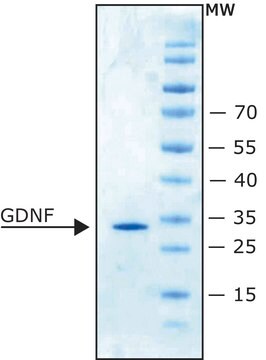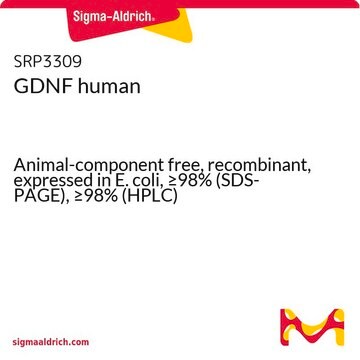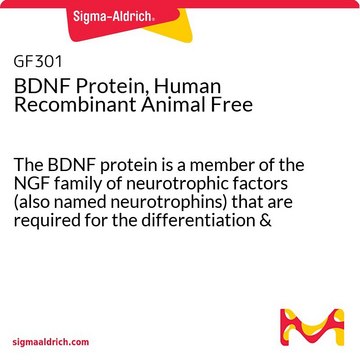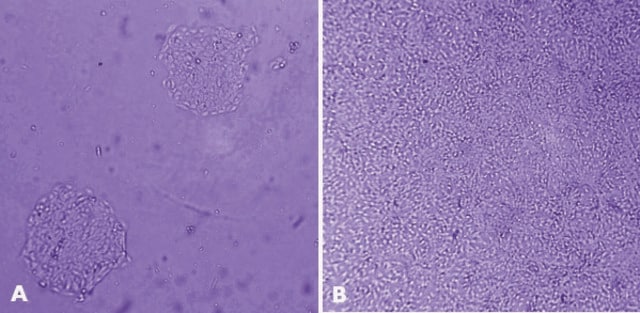B3795
Brain-derived neurotrophic factor human
≥95% (SDS-PAGE), recombinant, expressed in E. coli, lyophilized powder, suitable for cell culture
Sinónimos:
Abrineurin, BDNF
About This Item
Productos recomendados
product name
Brain-derived neurotrophic factor human, BDNF, recombinant, expressed in E. coli, lyophilized powder, suitable for cell culture
biological source
human
Quality Level
recombinant
expressed in E. coli
assay
≥95% (SDS-PAGE)
form
lyophilized powder
quality
endotoxin tested
mol wt
~27 kDa
packaging
pkg of 10 μg
pkg of 5 μg
storage condition
avoid repeated freeze/thaw cycles (Do not store in a frost-free freezer.)
technique(s)
cell culture | mammalian: suitable
impurities
≤1.00 EU/μg Endotoxin level
UniProt accession no.
storage temp.
−20°C
General description
The active form of BDNF recombinant human protein (27 kDa) is a dimer formed by two identical 119 amino acid subunits held together by strong hydrophobic interactions
Application
Biochem/physiol Actions
Physical form
Analysis Note
Storage Class
11 - Combustible Solids
wgk_germany
WGK 3
flash_point_f
Not applicable
flash_point_c
Not applicable
ppe
Eyeshields, Gloves, type N95 (US)
Certificados de análisis (COA)
Busque Certificados de análisis (COA) introduciendo el número de lote del producto. Los números de lote se encuentran en la etiqueta del producto después de las palabras «Lot» o «Batch»
¿Ya tiene este producto?
Encuentre la documentación para los productos que ha comprado recientemente en la Biblioteca de documentos.
Los clientes también vieron
Artículos
Products to enable the creation of neural models specific for your research.
Protocolos
Step-by-step culture protocols for neural stem cell culture including NSC isolation, expansion, differentiation and characterization.
Nuestro equipo de científicos tiene experiencia en todas las áreas de investigación: Ciencias de la vida, Ciencia de los materiales, Síntesis química, Cromatografía, Analítica y muchas otras.
Póngase en contacto con el Servicio técnico












